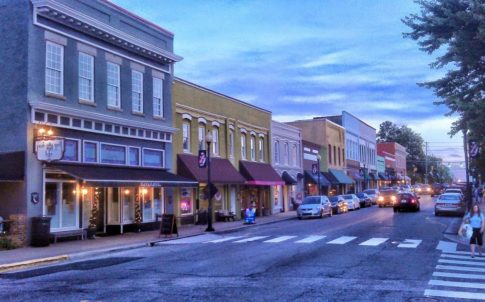Population Growth for Some Unlikely North Carolina Municipalities

July 2015 to July 2016 was the largest year of population growth for the state of North Carolina for any single-year period since the last decennial Census (2010). This was also the case for 124 of North Carolina’s municipalities, including several with previously slim or even declining population growth. These places are labeled and represented by colored markers on the Story Map below. The table accompanying each point compares the numeric and percentage growth year-to-year from 2010-2015 with the numeric and percentage growth from 2015-2016.
This map reveals the spatial component that is likely driving growth for many of these municipalities. The blue and purple rings represent buffers – of 15, 20 and 25 miles, respectively – surrounding the boundaries of North Carolina’s most populous cities. Two-thirds of these newly emerging municipalities are less than 20 miles from a major city – well within a reasonable commuting distance. As noted in a previous post, a number of these prospective suburbs and exurbs were among the fastest-growing places in the state. Nonetheless, only future Census population estimates will reveal if these growth patterns can be expected to continue, and for which places. If trends do continue, this likely indicates that residents are choosing to live and commute greater distances from North Carolina’s major urban cores.
Need help understanding population change and its impacts on your community or business? Carolina Demography offers demographic research tailored to your needs.
Contact us today for a free initial consultation.
Contact UsCategories: Carolina Demographics, Migration
Tags: interactive maps, municipalities, population estimates, U.S. Census Bureau

The Center for Women’s Health Research (CWHR) at the University of North Carolina School of Medicine released the 12th edition of our North Carolina Women’s Health Report Card on May 9, 2022. This document is a progress report on the…

Dr. Krista Perreira is a health economist who studies disparities in health, education, and economic well-being. In collaboration with the Urban Institute, she recently co-led a study funded by the Kate B. Reynolds Foundation to study barriers to access to…

Our material helped the NC Local News Lab Fund better understand and then prioritize their funding to better serve existing and future grant recipients in North Carolina. The North Carolina Local News Lab Fund was established in 2017 to strengthen…
Your support is critical to our mission of measuring, understanding, and predicting population change and its impact. Donate to Carolina Demography today.